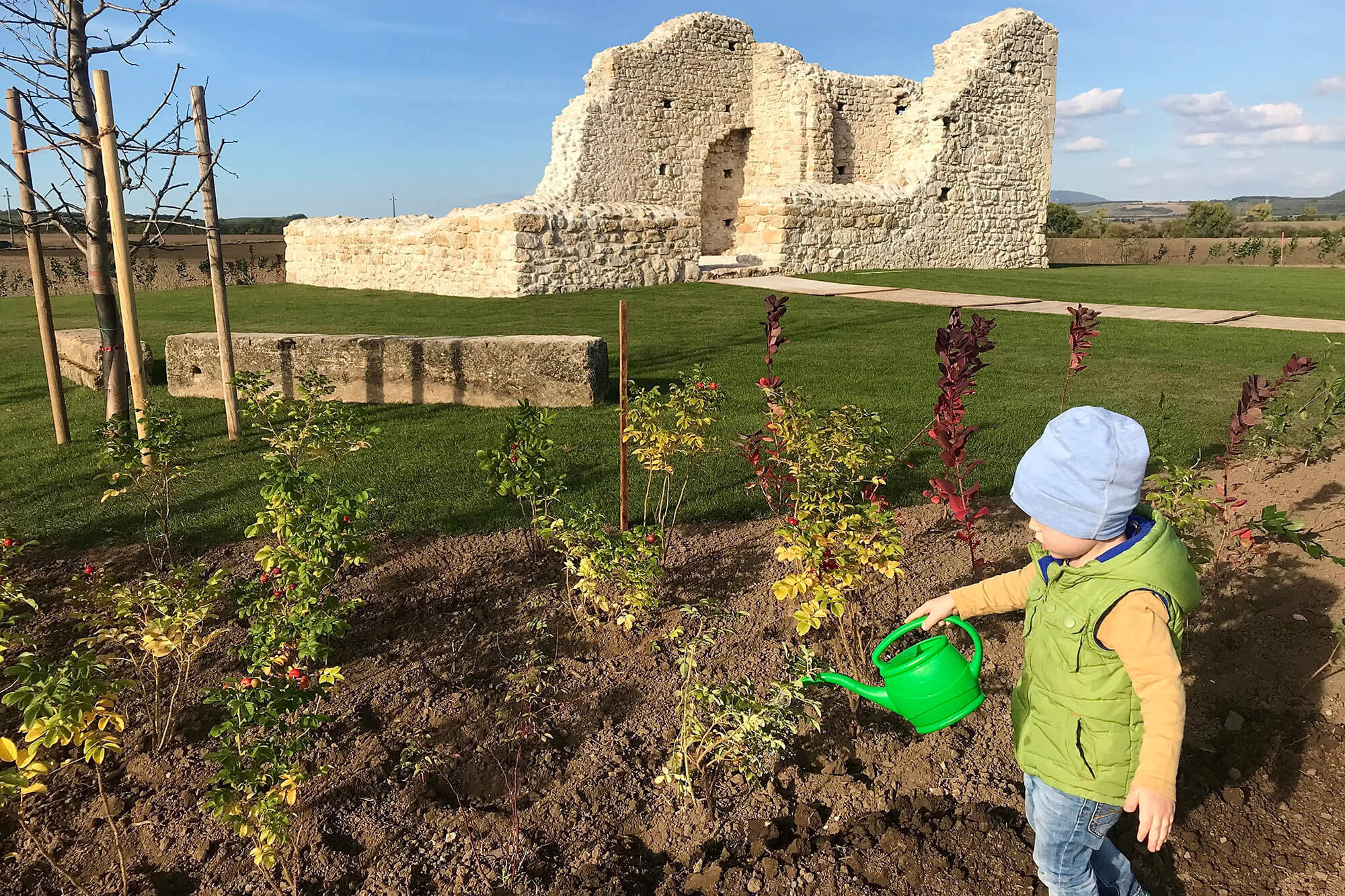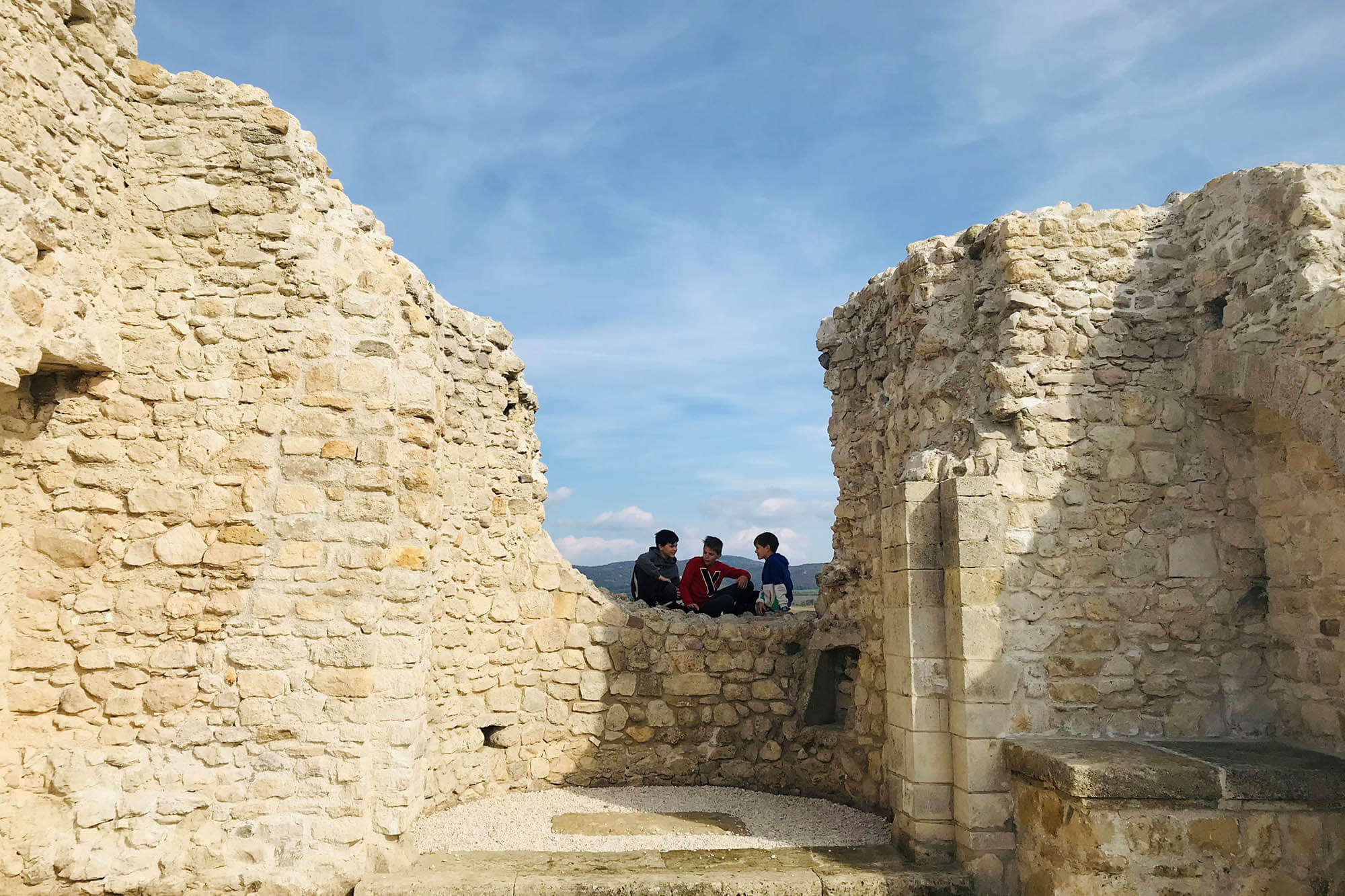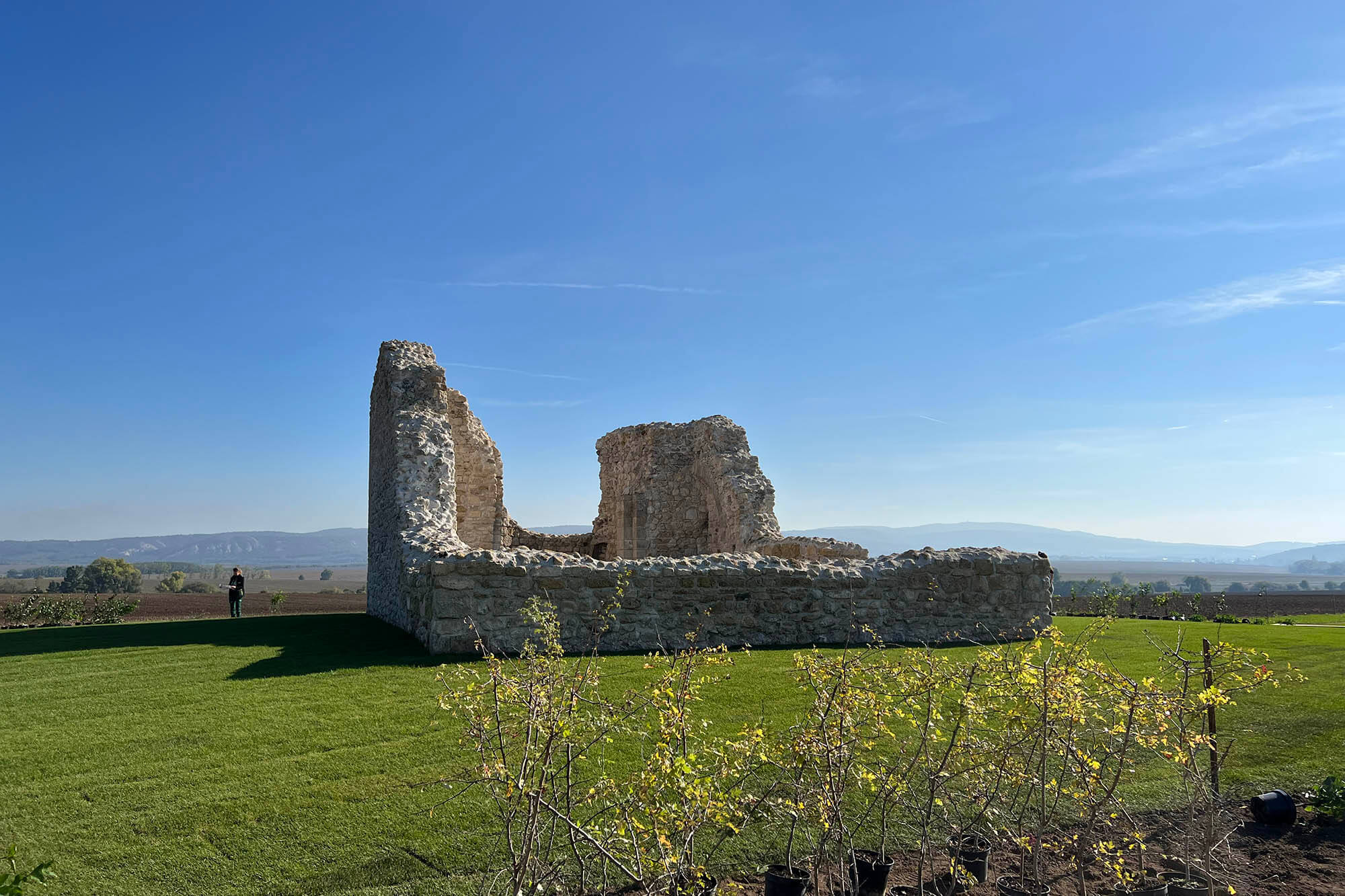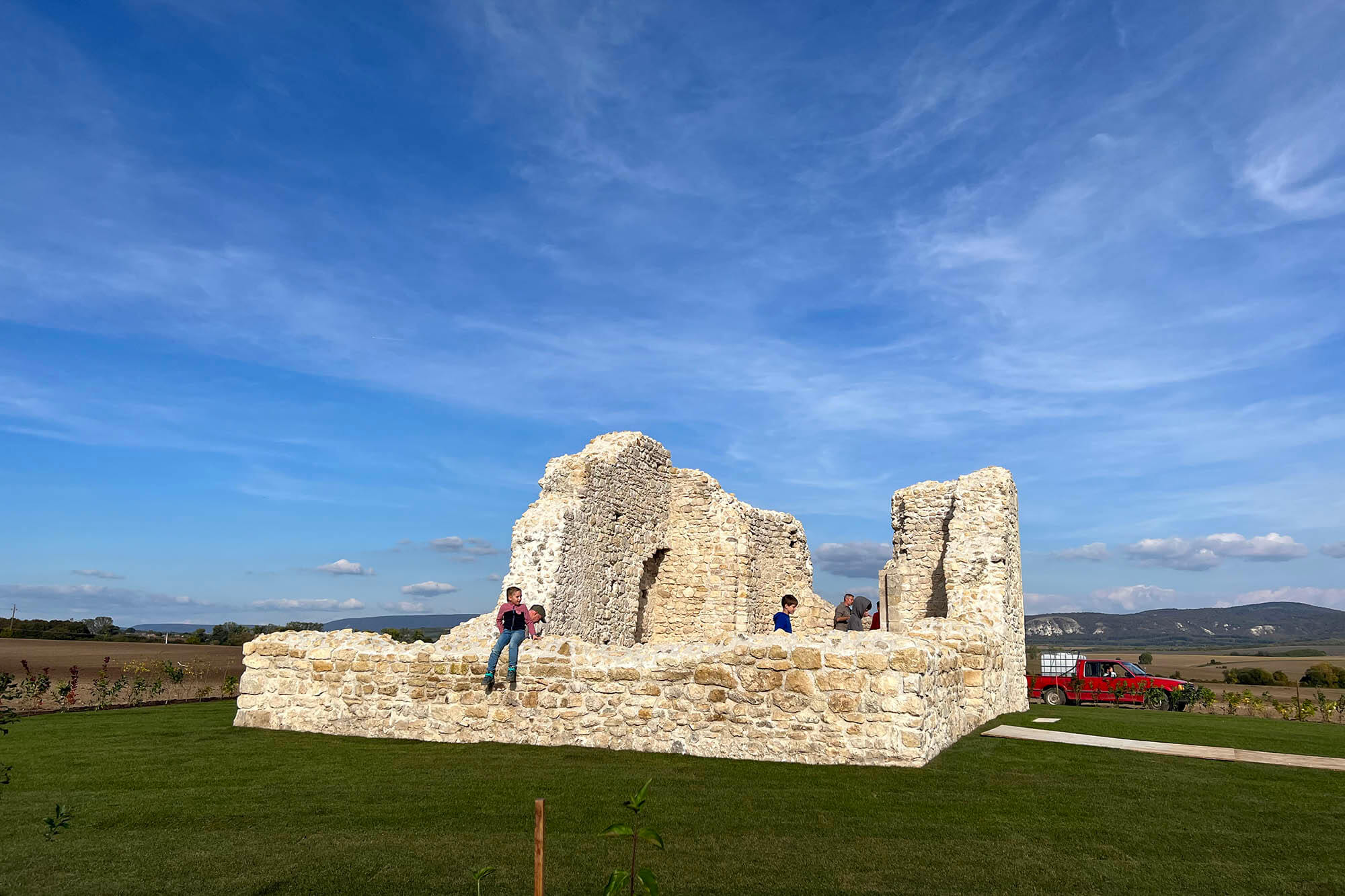Tök church ruin
Location
Tök
Construction period
13th century
Year of restoration
2022
Category
Other facilities




Within the framework of Market Építő Zrt.’s corporate social responsibility programme ROM Vándor (Ruin Rover), the 13th-century ruined church of Tök, situated in the Zsámbék Basin, was restored in 2022. This eastward-oriented Árpád-era monument has for some eight centuries borne witness to its picturesque landscape and remains one of the region’s distinctive yet lesser-known relics of medieval built heritage.
The origins of the church reach back to the Middle Ages; the first written mention of the settlement dates to 1278. The ruin is believed to be the remains of the parish church of a village depopulated during the Ottoman era. This modest, single-phase building of 14 by 8 metres belongs to the lineage of late Romanesque rural churches, distinguished by its semicircular sanctuary and southern portal. Its walls are predominantly built of rough limestone, complemented by travertine, sandstone, and breccia.
Although archaeological excavations and partial restorations were undertaken in the early 2000s, the environmental impacts of the past two decades once again threatened the integrity of the ruin. The objective of the ROM Vándor project was therefore to conserve the structure and its surroundings, safeguard its aesthetic value, and present its historic significance with due dignity.
The restoration reinforced and preserved the medieval masonry; missing or interpretive wall sections were reconstructed using authentic stone materials. The church interior was given a new limestone-chippings floor and a bespoke artificial-stone bench, while an information board at the entrance now welcomes visitors. A special feature of the project is the “ruin diary”, where guests are invited to leave written messages or drawings.
As part of the site’s rehabilitation, a redefined boundary now allows for dual access, and with the integration of the Marian pilgrimage route, the ruin has become an official destination for both pilgrims and hikers. A green zone has been created with new trees and several hundred shrubs, enriching local biodiversity and establishing the site as a place of rest and contemplation.
The works were carried out not only by professionals but also with the active involvement of Market Építő Zrt.’s employees and their families: around one hundred volunteers helped with landscaping and planting. The long-term vision of the programme is to ensure the preservation of the monument and its surroundings through the continued engagement of the local community, thereby deepening responsibility and commitment towards cultural heritage.

